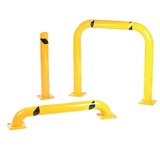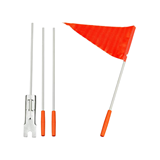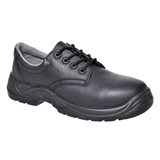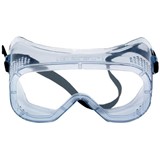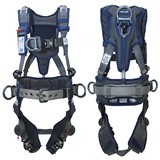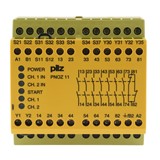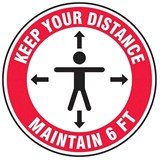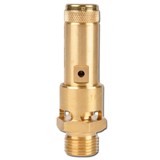There are several phases that need to be considered when formulating a safety speech. There is a data gathering phase when groundwork needs to be established. The writing phase then consists of three primary steps, followed by applying style guidelines to get the most from the speech.
While writing an effective workplace safety speech can be challenging, the following steps will guide safety officers through the process and help them create a winning presentation.
Data gathering
Linear thinking can sidetrack the process
Most production plants are very linear in nature. Employees perform a set of designed steps, eventually creating the end-product.
However, with worksite safety, it isn't as simple as telling them to affix side panel A to base B.
The goal of a safety speech is likely to encourage a change in behaviour. Workers must understand why things need to change or why protocols are in effect, not just what the issue is.
Before beginning the writing process, consider the safety hazards at the plant and the ramifications of not following proper protocols.
Connect the dots
No sooner is linear thinking denounced…
This is a different kind of dot connecting, though. This isn't about the employees or production, but rather upper management. The owner, CEO or safety officers need to walk into the presentation with an established connection to the plant floor. The presenter needs to know how the plant operates and be familiar with employee concerns.
Collecting data via a questionnaire is one way to better understand the workforce, but having walked the floor to discuss their needs demonstrates a genuine concern for the employees' well-being. It can also lead to more candid responses.
Writing Steps
Begin with why
The start of the presentation is a great time to remind employees of the why's in your company. Why does the company exist? Why are the employees there and why do they matter in creating a quality product? Why do customers buy your product instead of a competitor's? Why is safety important and what issues exist that need to be changed?
Start with an opening that reminds the workforce the presentation is for their benefit. Stress that management is concerned with their safety and why the company is dedicating hours to this project.
Depart from the now
Perhaps there hasn't been a firm safety plan in place, or maybe employees haven't been following established protocol. All too often senior management has unrealistic production expectations that result in supervisors stressing speed over safety.
Whatever the issues, get them in the open – and then clear them off the table. This can be done metaphorically, but placing props on a table, and then sweeping them to the floor or a trash can, makes for a striking visual.
Make it clear there is a clean slate, but that prior mistakes end now.
Define what's next
Employees need to know how change will be instituted and what the expectations are going forward. Metrics and timelines need to be defined and workers should be reminded of the perils the protocols are designed to avoid.
For example, a plant with a history of toe injuries could create a new protocol that all employees must own and wear steel-toed work boots by a given date.
Don't get bogged down in statistics with this step. Employees don't remember them and aren't likely to care about things happening outside their walls
It is important to be positive, but a realistic example of what could happen if safety steps are skipped can really bring the message home. Discuss how an injury would impact the employee at work and at home, how it impacts co-workers, and any financial consequences.
 |
| How can you spruce up your OHS presentation? |
Style guidelines
Get engaged
It isn't enough to get in front of the room and tell employees what the expectations are going forward. Visual aids, demonstrations, and audience participation are all essential if employees are going to retain, and care about, the information.
Use time on the production floor to gather information that will be useful in the presentation. Glean an issue or two that can be transitioned into a story about what is or isn't working. It is more powerful to provide something relevant to the employees' daily experiences.
Group empowerment
Buzzwords won't carry much weight, but reinforcing their power as a collective certainly will. The employees need to see themselves as a single, united workforce that has the capacity to achieve impressive goals.
Find opportunities to discuss prior accomplishments to motivate future performance, including how safety protocols are a vital component of their success.
Avoid time constraints
If at all possible, don't enter the process thinking the presentation can only be five minutes long or that it needs to fill a 30 minute window.
Be concise, but allow enough time to provide examples and interaction. Also, be sure there is an opportunity for questions at the conclusion of the presentation.
As a reminder, start the meeting by reinforcing an established emotional connection with the employees. Assure them their safety is the reason for any existing or new protocols. They will immediately become more engaged and see themselves as part of the process.
Stay positive throughout and remember that an interactive meeting will help employees learn and retain information better than a monologue. Utilise an audiovisual system with pictures and possibly video, but limit words to major bullet points. It is also a good idea to test the equipment well before the meeting is supposed to begin.
Find safety equipment suppliers and solutions
Safety training and courses
Safety consultants and certifiers



